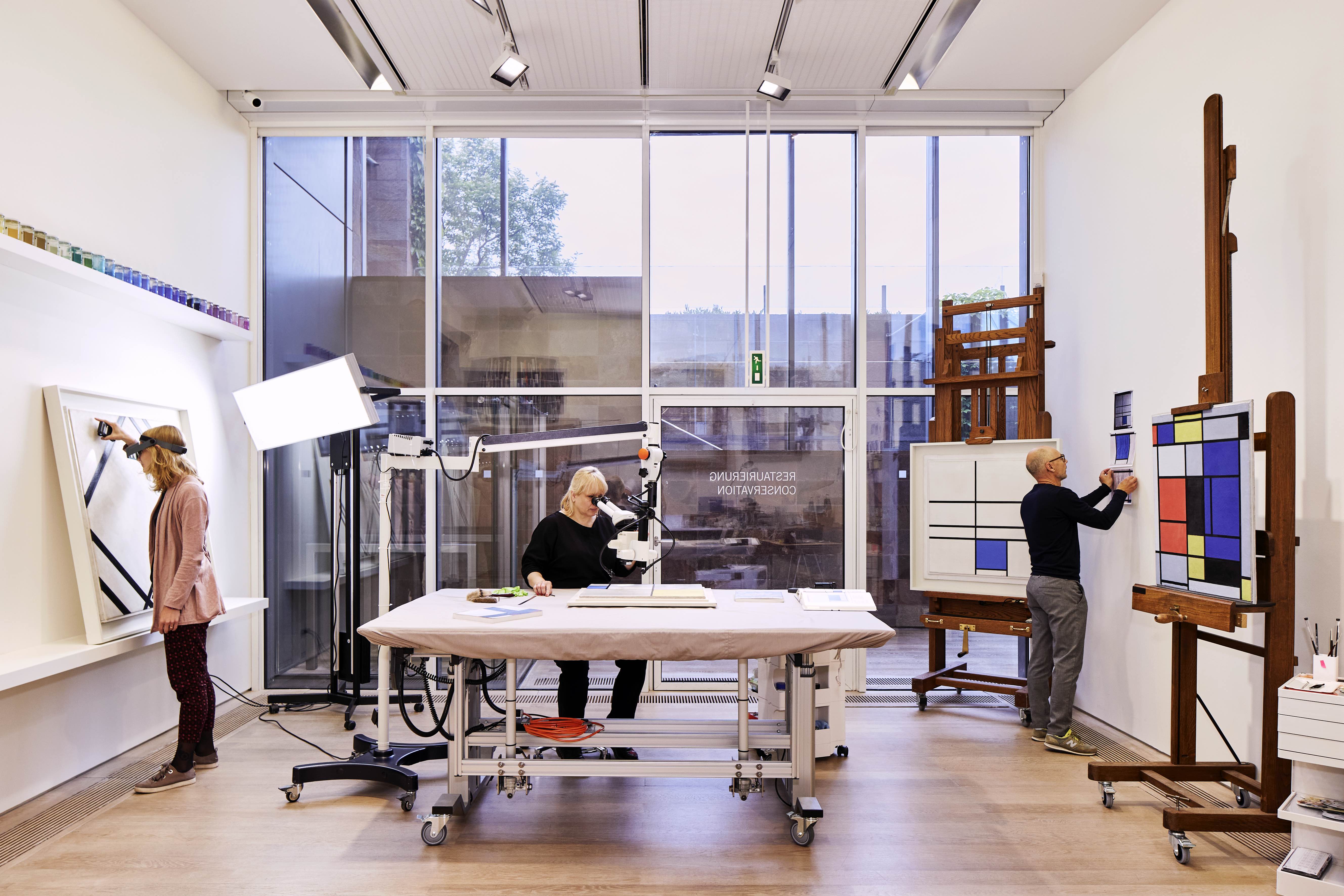
The organizers of a large Piet Mondrian exhibition at the Fondation Beyeler in Basel are forging ahead with a provocative thesis: that the artist never truly abandoned nature.
The show, which will include around 80 works and is being organized by curator Ulf Kuster, is underpinned by the Beyeler collection’s own seven Mondrian works, which span more than a quarter century and chart the artist’s path from Cubism to his signature Neo-plastic style.
Kuster says the traditional narrative—that the artist progressed steadily from his early, naturalistic landscape paintings of the Dutch countryside to his striking abstraction—is too simple to hold true.
Piet Mondrian, Composition With Double Line and Blue (1935). Fondation Beyeler, Riehen/Basel, Sammlung Beyeler. Photo: Robert Bayer. © 2020 Mondrian/Holtzman Trust.
“The interesting thing with Mondrian is the dating of his work, and there is some research to be done on this, and some of it has been done, suggesting that his development from figuration to abstraction is not so straightforward,” Kuster says.
Throughout the early parts of his career, Mondrian painted flowers—often signing the pictures “Mondriaan” in its original Dutch spelling, seemingly to distance himself from the works—which he sold to stay afloat. But Kuster suggests that even after he moved to New York in 1940, 20 years after he entered his mature phase, he seems to have done a flower painting.
The Beyeler show is driven in part by contemporary sensibilities about the distinctions, or lack thereof, between abstraction and figuration.
“If you talk to Peter Doig or Neo Rauch, they don’t see this very scholarly distinction between figuration and abstraction,” says Kuster, who has worked on shows about both artists. “The more you get involved with Mondrian, the more you see this difference didn’t exist so much. He always said he was coming from nature.”
The conservation studio at the Fondation Beyeler, with paintings by Piet Mondrian. Photo courtesy Fondation Beyeler and La Prairie.
As part of the project, museum conservators are examining all of the institution’s Mondrian works to get a better sense of his working methods.
One riddle the project’s organizers hope to solve is how exactly Mondrian painted his pictures, and in particular how he laid down his black lines, which often sink below the surfaces of his red, yellow, and blue sections.
Although reproductions suggest his work is exceedingly flat, there is often a slight relief to the colored squares, which pop off the canvas.
“Every single piece is of a very high quality, but they all have different surfaces,” Markus Gross, the Beyeler’s head of conservation, says of the museum’s Mondrian collection. “The works look simple, but the surfaces are really complex. There is a kind of texture, the colored squares are thick and structured, whereas the black lines are thin.”
Conservators at the Fondation Beyeler at work on paintings by Piet Mondrian. Photo courtesy Fondation Beyeler and La Prairie.
“There are letters and quotes and drawings, so there is some information about how he made his works,” Gross says. “But there is no literature on his working process. So we want to do a mock-up reconstruction of a painting to better understand his techniques.”
To aid their efforts, which are funded in large part by the Swiss skin care company La Prairie, researchers are bringing in two outside scientific experts from Amsterdam to analyze Mondrian’s pigments, bindings, canvases, grounds, and stretchers.
They are also consulting with Mondrian scholars at the Kunstmuseum in The Hague, which has the largest collection of Mondrian works in the world and organized a sprawling retrospective of his work in 2017.
The Beyeler exhibition, which will capstone the two-year conservation project, opens in 2022.